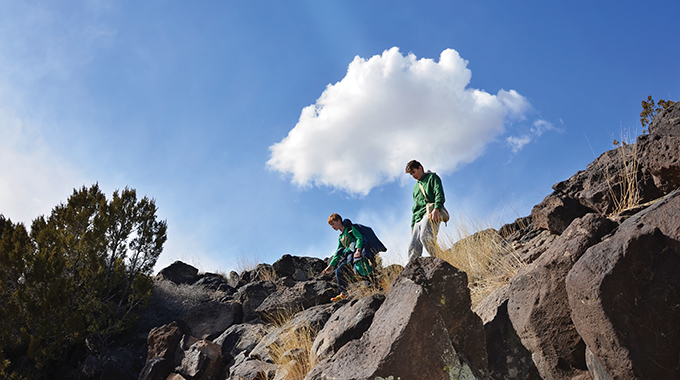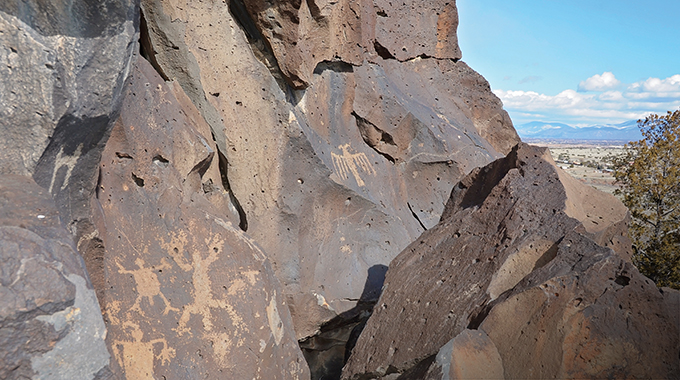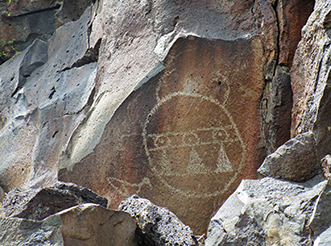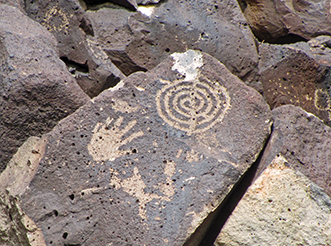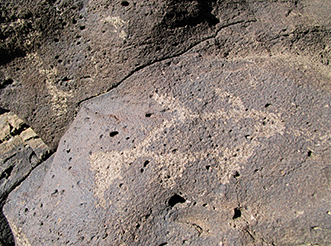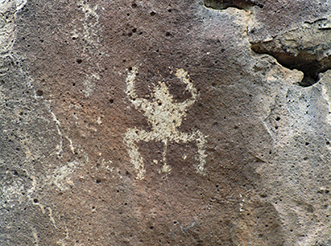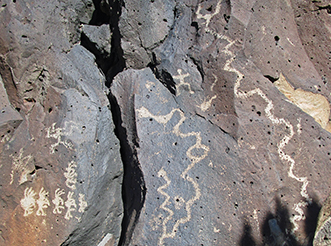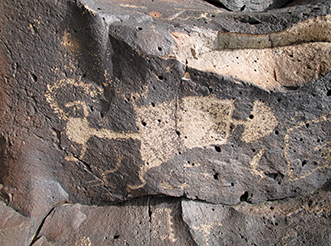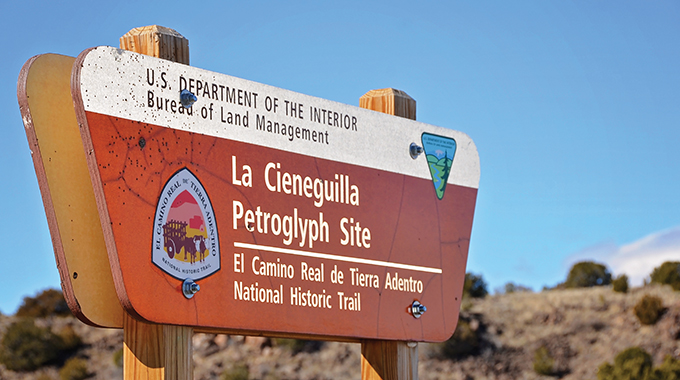Hikers can find more than 4,000 ancient rock art on a 1-mile trail at the La Cieneguilla Petroglyph Site.
A conspiracy of ravens circled overhead—omens, perhaps, of the ancient birds I was about to encounter. Dutifully following the white arrows on shin-high trail markers, I traced a flat path that soon turned right and climbed a short, sharp hill. Above me, black cliffs looked out on the Santa Fe River Valley and held on to one of the City Different’s best-kept secrets: a treasure trove of more than 4,000 petroglyphs in a short 1-mile stretch.
Just west of Santa Fe, La Cieneguilla Petroglyph Site offers a burst of Puebloan rock art, along with a chance to stretch your legs for an hour or two on a moderately challenging trail. I got there early enough in the morning to have that trail to myself, at least for a bit. Panting once I reached the basalt layer capping the mesa, I turned to catch a view of the river. Instead, the pecked-out outline of a magnificent bird stopped me cold.
One of my ravens? A mythical knife wing? No one really knows. Petroglyphs shield their meanings in centuries of tradition passed down by elders to the young. Theories abound, but answers are elusive. The outsider’s best option: Be still, and let the voices of the past come to you in silence.
Threading along the cliff trail, sometimes using both hands to negotiate boulders, I pondered an array of kokopelli-like flute players. Birds and frogs. A six-fingered hand. Spirals and stair steps. Fearsome warriors. Enough snakes to keep me wary with each step.


